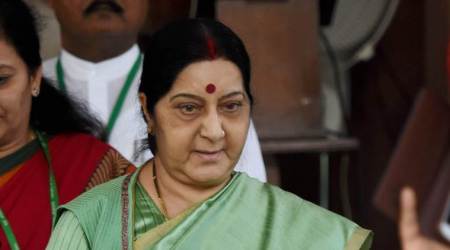 Student safety and teacher training (both of them are linked) are seen as redundant expenses. (Illustration: C R Sasikumar)
Student safety and teacher training (both of them are linked) are seen as redundant expenses. (Illustration: C R Sasikumar)
The tragic demise of Arman, 10 years old, in circumstances that have yet to be established, touches a raw nerve — as indeed it should. Arman reportedly succumbed to head injuries after a fall at the Ghaziabad school he attended this week. No doubt, there will be a search for the “truth”, through the media, inquiry committees and what-have-you. But there is one truth that stares the nation in its face. Arman’s tragedy, and indeed the fate of many such children, is only symptomatic of one of the many failures of our education system. Student safety is certainly not on the priority list of those who control the levers of our system.
There are two main reasons for this. One is that, by and large, education is run by people who have no background in, empathy for, or knowledge of, the real issues that affect this critical sector. The private schools are run by and as “business interests”. So anything that does not contribute directly to the coffers is seen as inconsequential.
Student safety and teacher training (both of them are linked) are seen as redundant expenses. Sitting as almost all schools are, in a position of power in a sellers’ market, they can afford to and do get away with such arrogance. After all, when as a parent you have spent months filling in forms for your child’s admission to a school of your choice, dialled various numbers to get “contacts” till your fingers fall off, and then probably stood in an endless queue to put in the application, you are hardly likely to turn around and ask the school after getting that magic admission, “How good are your safety norms?” Or “How well trained are your teachers?”
The sad part is that if and when something goes wrong, it is usually the hapless principal who takes the rap, no matter that she/he would have been screaming for more funds for years to deal with such issues. The other kinds of schools, the ones that are run supposedly by “trusts,” “societies,” “boards” and consider themselves “superior” to those who “educate for profit”, are not very different in this respect. Here, the financial interest is given a fig-leaf of respectability, by including so-called “eminent educationists” who are not influenced by crass considerations such as money. So what drives them? In my experience, it is, for them, a huge ego trip. Interest in the welfare of children, or their education, has very little to do with it.
Without generalising, therefore, let me illustrate from my career in which I had the privilege of heading two of the country’s leading “public schools” for close to two decades. In the first instance, the school was by some peculiar accident of history run by the ministry of human resource development, with the chairman, the ex-officio secretary, education, government of India.
I served under at least four chairpersons, and realised that while their intentions were honourable, they did not have the time to pay attention to the matters of a remote boarding school in the hills. It took weeks, often months of telephone calls to the chairman’s secretary to even fix a board meeting, and more often than not, the chairman would have to back out at the last minute, leaving the field to a sundry collection of board members (all nominees of the ministry), many of whom were either not interested, or worse, had their own agenda. In this situation, it was difficult — to say the least — to have any meaningful discussion on issues pertaining to the school.
The second public school in Dehradun had a chairman for life, who nominated his own board. This was a school founded in 1935, and when I took over in 2003, I found that none of the buildings had even a fire escape, all the electric wires were exposed and not earthed, the water tanks had not been cleaned for years (resulting in a typhoid outbreak within a month of my taking over), the catering staff had no medical examinations, and the medical records of the students were, at best, sketchy. And this was not because the board did not want to spend the money for these essentials. It was simply that they were blissfully unaware, and sought refuge in the fact that all the buildings were very old any way, and it took a cussed principal in 2003 to wake them out of their slumber.
It is not just the boards that have to take the rap. We are all culpable. Whilst there are principals who are concerned, a disturbingly large number are not willing to “rock the boat”. More distressingly, how many principals, or indeed teachers, are trained in these areas? The ICSE and CBSE have both published detailed guidelines for schools. But these, as we all know, remain confined within their covers. How often are safety audits carried out? Why do PTAs not hold school managements responsible?
If this is the state of affairs in a well-known, high-value school, what must be the fate of the ones in lesser-endowed schools? Arman, and others who have suffered his fate, can never be brought back. But if the lessons we learn from their tragedy are used to improve and make safer the lives of other children, they will perhaps have reason to look down and smile.







